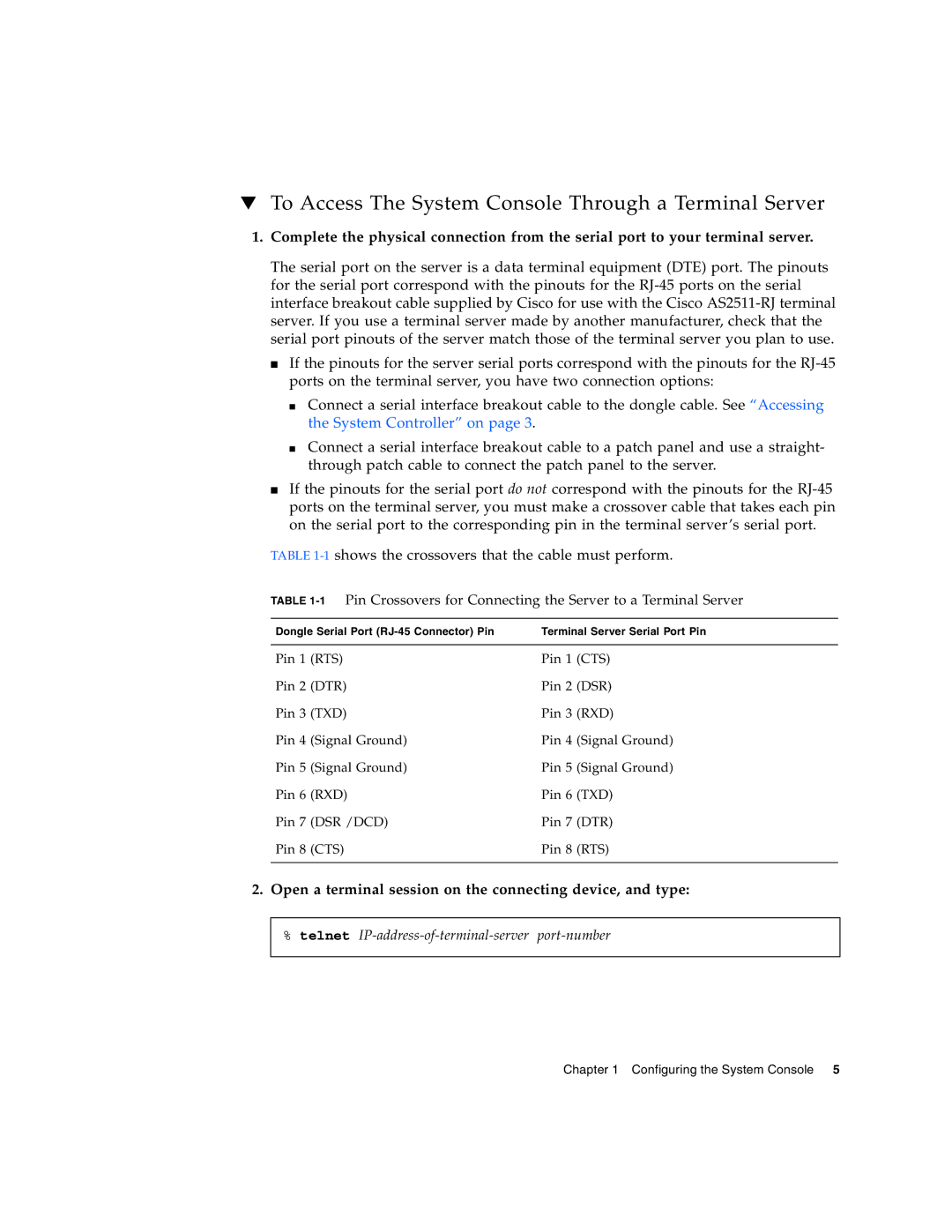
▼To Access The System Console Through a Terminal Server
1.Complete the physical connection from the serial port to your terminal server.
The serial port on the server is a data terminal equipment (DTE) port. The pinouts for the serial port correspond with the pinouts for the
■If the pinouts for the server serial ports correspond with the pinouts for the
■Connect a serial interface breakout cable to the dongle cable. See “Accessing the System Controller” on page 3.
■Connect a serial interface breakout cable to a patch panel and use a straight- through patch cable to connect the patch panel to the server.
■If the pinouts for the serial port do not correspond with the pinouts for the
TABLE
TABLE
Dongle Serial Port | Terminal Server Serial Port Pin | ||
|
| ||
Pin 1 (RTS) | Pin 1 (CTS) | ||
Pin 2 (DTR) | Pin 2 (DSR) | ||
Pin 3 (TXD) | Pin 3 (RXD) | ||
Pin 4 (Signal Ground) | Pin 4 (Signal Ground) | ||
Pin 5 | (Signal Ground) | Pin 5 | (Signal Ground) |
Pin 6 | (RXD) | Pin 6 | (TXD) |
Pin 7 | (DSR /DCD) | Pin 7 | (DTR) |
Pin 8 | (CTS) | Pin 8 | (RTS) |
|
|
|
|
2.Open a terminal session on the connecting device, and type:
%telnet
Chapter 1 Configuring the System Console 5
